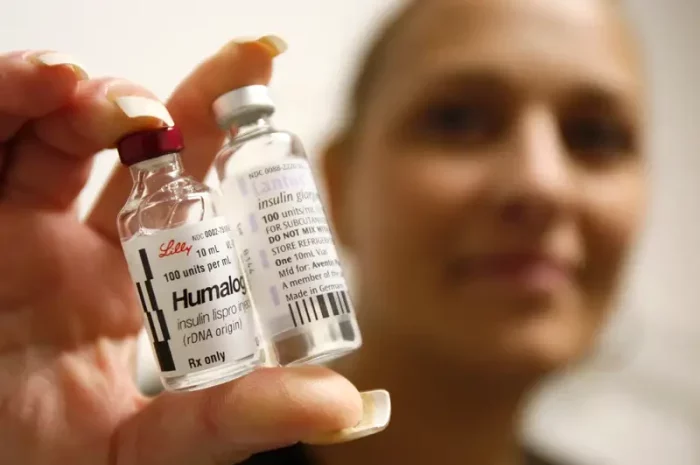Diabetes, a chronic metabolic disorder characterized by elevated blood sugar levels, affects millions of people worldwide. Despite its prevalence, many individuals remain unaware of their condition, as diabetes can often develop silently over time. However, certain symptoms may serve as warning signs of undiagnosed diabetes, prompting individuals to seek medical attention for proper evaluation and management. In this comprehensive article, we delve into the three most common symptoms of undiagnosed diabetes, shedding light on their significance, underlying causes, and implications for early detection and intervention.
Understanding Diabetes: A Brief Overview
Before delving into the symptoms of undiagnosed diabetes, it’s essential to understand the two primary types of diabetes:
1. Type 1 Diabetes: Type 1 diabetes is an autoimmune condition in which the body’s immune system mistakenly attacks and destroys insulin-producing beta cells in the pancreas. As a result, individuals with type 1 diabetes have an absolute deficiency of insulin, requiring lifelong insulin therapy for survival. Type 1 diabetes often develops during childhood or adolescence, although it can occur at any age.
2. Type 2 Diabetes: Type 2 diabetes is a metabolic disorder characterized by insulin resistance and relative insulin deficiency. In type 2 diabetes, the body’s cells become resistant to the effects of insulin, leading to impaired glucose uptake and elevated blood sugar levels. Over time, the pancreas may also lose its ability to produce enough insulin to compensate for insulin resistance, further contributing to hyperglycemia. Type 2 diabetes is more common in adults, although rates of diagnosis among children and adolescents are rising.
Top Three Symptoms of Undiagnosed Diabetes
1. Frequent Urination (Polyuria):
Frequent urination, also known as polyuria, is one of the hallmark symptoms of undiagnosed diabetes. In diabetes, elevated blood sugar levels can lead to increased urine production as the kidneys work to eliminate excess glucose from the bloodstream. This excessive urination can result in frequent trips to the bathroom, both during the day and at night, disrupting sleep and causing discomfort.
The underlying mechanism behind polyuria in diabetes involves the concept of osmotic diuresis. When blood sugar levels are high, glucose spills over into the urine, drawing water with it through osmosis. As a result, the volume of urine produced increases, leading to polyuria.
2. Excessive Thirst (Polydipsia):
Excessive thirst, or polydipsia, often accompanies frequent urination in individuals with undiagnosed diabetes. As the body loses large volumes of fluid through urine, it can become dehydrated, triggering thirst signals in an attempt to replenish lost fluids. Individuals may find themselves drinking more water than usual and experiencing persistent feelings of thirst that are not relieved by drinking.
Polydipsia is closely linked to polyuria and serves as a compensatory mechanism to maintain fluid balance in the body. However, excessive thirst and fluid intake may exacerbate polyuria, creating a cycle of increased urine production and thirst.
3. Unexplained Weight Loss:
Unexplained weight loss is another common symptom of undiagnosed diabetes, particularly in individuals with type 1 diabetes. Despite normal or increased food intake, individuals may experience gradual and unintentional weight loss over time. This weight loss is primarily due to the loss of calories through urine as the body excretes excess glucose, coupled with the breakdown of muscle and fat stores for energy in the absence of sufficient insulin.
The underlying mechanisms contributing to weight loss in diabetes involve both calorie loss through urine and alterations in metabolism. Without adequate insulin to facilitate glucose uptake into cells, the body resorts to burning fat and muscle tissue for energy, resulting in weight loss.
Additional Symptoms and Red Flags to Consider
While frequent urination, excessive thirst, and unexplained weight loss are three of the most common symptoms of undiagnosed diabetes, it’s important to recognize that other signs may also indicate the presence of diabetes or complications associated with the condition. These may include:
1. Fatigue and Weakness: Persistent fatigue, lethargy, and weakness may result from the body’s inability to effectively utilize glucose for energy, leading to decreased energy levels and feelings of exhaustion.
2. Blurry Vision: High blood sugar levels can cause changes in the shape of the lens in the eye, leading to blurry vision or fluctuations in eyesight. Individuals may notice difficulty focusing, especially during periods of hyperglycemia.
3. Slow Wound Healing: Elevated blood sugar levels can impair the body’s ability to heal wounds and fight infections, leading to delayed wound healing and an increased risk of infections, particularly in the feet and lower extremities.
4. Recurrent Infections: Individuals with diabetes may be more prone to infections, such as urinary tract infections (UTIs), yeast infections, and skin infections. High blood sugar levels create a favorable environment for bacterial and fungal growth, increasing the risk of infection.
5. Numbness or Tingling in Extremities: Peripheral neuropathy, a common complication of diabetes, can cause numbness, tingling, or burning sensations in the hands, feet, or legs. These symptoms may result from nerve damage caused by prolonged exposure to high blood sugar levels.
Conclusion: The Importance of Early Detection and Intervention
Recognizing the early warning signs of undiagnosed diabetes is crucial for prompt diagnosis and intervention to prevent complications and improve outcomes. Frequent urination, excessive thirst, and unexplained weight loss are three of the most common symptoms that may indicate the presence of diabetes, particularly type 1 diabetes.
If you experience any of these symptoms or have concerns about your health, it’s essential to consult with a healthcare professional for proper evaluation and testing. A thorough medical evaluation, including blood tests to measure blood sugar levels and other diagnostic assessments, can help determine whether diabetes or another underlying condition is contributing to your symptoms.
Early detection and management of diabetes are key to preventing complications and optimizing long-term health and well-being. By staying vigilant, proactive, and informed about the signs and symptoms of diabetes, individuals can take control of their health and work towards achieving optimal glucose control and overall wellness.

























